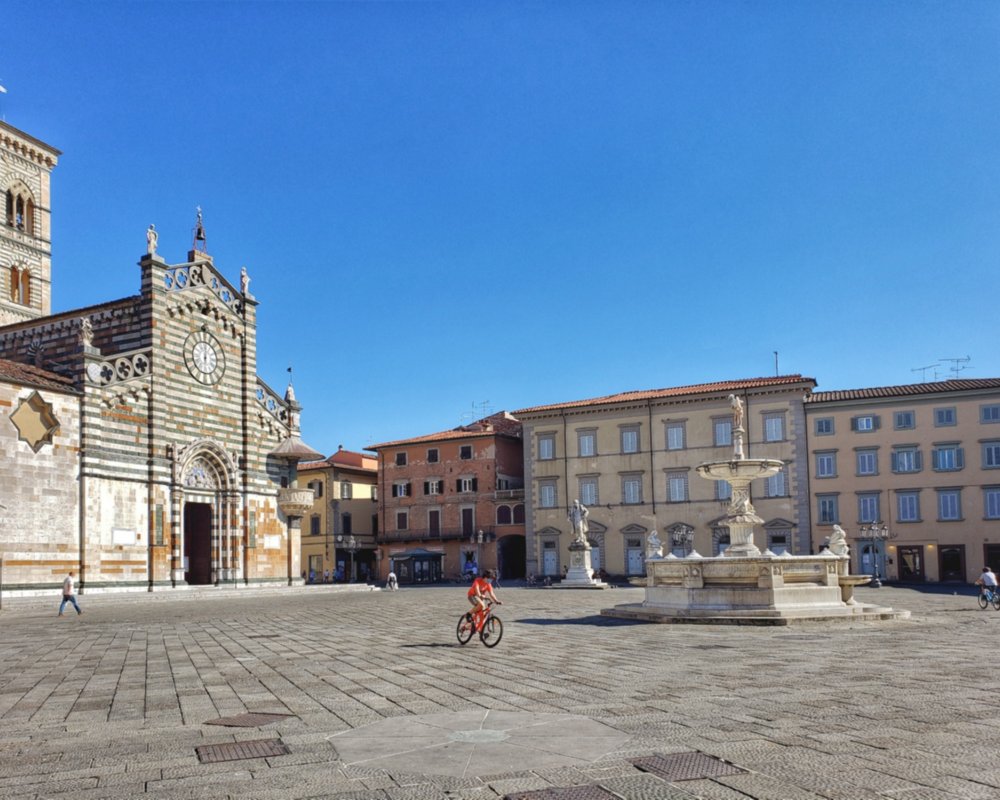Prato e il Bisenzio in bicicletta
Se amate girare in bicicletta senza eccessivo sforzo fisico, Prato è il punto di partenza ideale per cicloescursioni occasionali e di corto raggio, su piste ciclopedonali asfaltate o terra battuta stabilizzata, alla scoperta di inusuali prospettive della città e delle principali attrazioni turistiche.
Se arrivate in treno con la bicicletta potete subito fare un giro in centro e pedalare tra chiese, palazzi e torri medievali per raggiungere in pochi minuti il Duomo, custode degli affreschi di Filippo Lippi, con il suo suggestivo Pulpito di Donatello e le principali piazze della città. Ritagliatevi del tempo per una breve sosta enogastronomica e deliziate il palato con due specialità imperdibili: le pesche di Prato e i biscotti con la mandorla. Così rifocillati sarà più energica la pedalata e arrivando davanti al Castello dell’Imperatore, resterete affascinati dalla sua imponenza! Poi arriverete al Museo del Tessuto e in piazza San Marco, dove la particolare scultura d'arte di Henry Moore Forma squadrata con taglio, vi farà sbizzarrire nelle più curiose interpretazioni.
Costeggiando le mura antiche lungo la pista ciclopedonale, una bella pedalata lungo le sponde del Bisenzio vi porterà alla conclusione dell’itinerario, possibile in due diverse varianti (verso nord fino al ponte sul Rio Buti o verso sud fino al borgo di Gonfienti), oppure potrete proseguire per altri itinerari lungo il fiume, sulle colline circostanti o verso la Val di Bisenzio.
Il percorso è totalmente pianeggiante e non presenta criticità.
Volendo può essere suddiviso in due, effettuando la sola parte del centro (5 km) oppure l'anello delle due rive del fiume Bisenzio, lungo le ciclabili Coppi e Bartali.


